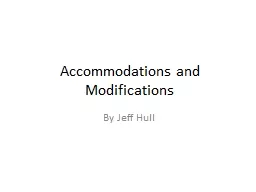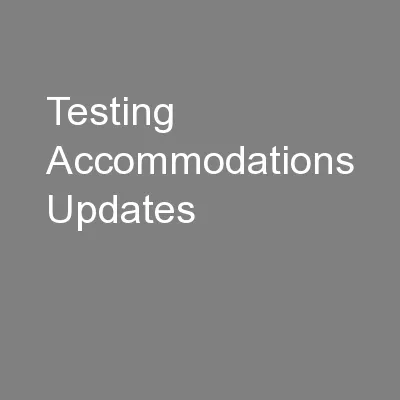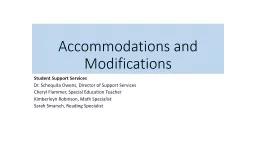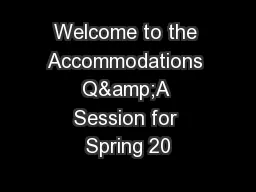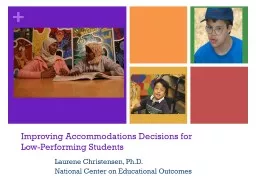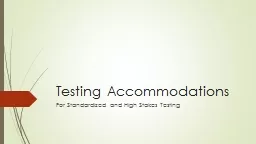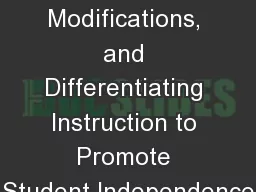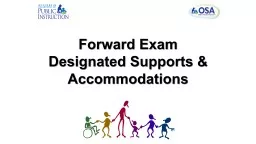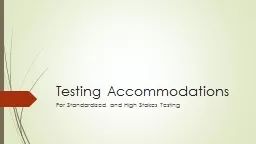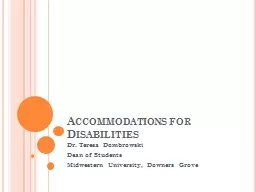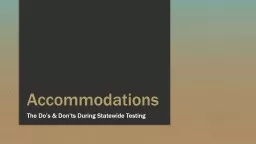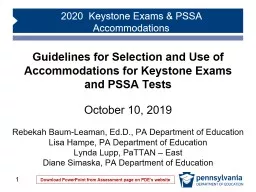PPT-Considering Accommodations
Author : lindy-dunigan | Published Date : 2018-11-10
in State Assessments 20132014 and Beyond Melissa Gholson Office of Assessment and Accountability Thinking About Accommodations Where are we now Where are we going
Presentation Embed Code
Download Presentation
Download Presentation The PPT/PDF document "Considering Accommodations" is the property of its rightful owner. Permission is granted to download and print the materials on this website for personal, non-commercial use only, and to display it on your personal computer provided you do not modify the materials and that you retain all copyright notices contained in the materials. By downloading content from our website, you accept the terms of this agreement.
Considering Accommodations: Transcript
Download Rules Of Document
"Considering Accommodations"The content belongs to its owner. You may download and print it for personal use, without modification, and keep all copyright notices. By downloading, you agree to these terms.
Related Documents


